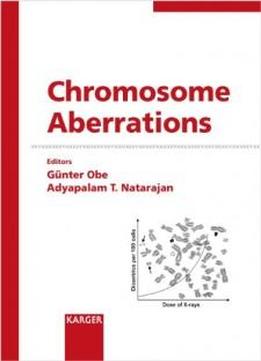
Chromosome Aberrations (reprint Of Cytogenetic And Genome Research 2004)
by G. Obe /
2004 / English / PDF
9 MB Download
Reprint of: Cytogenetic and Genome Research 2004, Vol. 104, No. 1-4
The role of chromosome aberrations in evolution and human health is
well recognized. This volume brings together papers summarizing our
current knowlege of the structure of interphase nuclei, chromosome
structure, mechanisms of aberration formation and the practical
application of this knowledge in radiobiology, biomonitoring of
human populations and cancer research. Molecular cytogenetic
techniques such as fluorescence in situ hybridization using whole
chromosome and region specific painting DNA probes have been
successfully used to identify and quantify chromosome aberrations,
which is reflected in several papers of this volume. The mechanisms
of chromosome aberration formation by different types of ionizing
radiation are considered in detail. Furthermore, the important role
of telomeres in maintaining chromosome integrity and their
involvement in genomic instability are discussed. A final section
is dedicated to the clinical relevance of chromosome aberrations in
human hereditary diseases, e.g. Fanconi anemia or ataxia
telangiectasia, and in many human cancers characterized by specific
translocations or deletions. The study of chromosome aberrations is
of great relevance in clinical genetics and oncology for diagnosis
and disease prevention. Thus this publication is recommended
reading for cytogeneticists, radiobiologists, oncologists, and
post-graduate students of genetics and medicine.
Reprint of: Cytogenetic and Genome Research 2004, Vol. 104, No. 1-4
The role of chromosome aberrations in evolution and human health is
well recognized. This volume brings together papers summarizing our
current knowlege of the structure of interphase nuclei, chromosome
structure, mechanisms of aberration formation and the practical
application of this knowledge in radiobiology, biomonitoring of
human populations and cancer research. Molecular cytogenetic
techniques such as fluorescence in situ hybridization using whole
chromosome and region specific painting DNA probes have been
successfully used to identify and quantify chromosome aberrations,
which is reflected in several papers of this volume. The mechanisms
of chromosome aberration formation by different types of ionizing
radiation are considered in detail. Furthermore, the important role
of telomeres in maintaining chromosome integrity and their
involvement in genomic instability are discussed. A final section
is dedicated to the clinical relevance of chromosome aberrations in
human hereditary diseases, e.g. Fanconi anemia or ataxia
telangiectasia, and in many human cancers characterized by specific
translocations or deletions. The study of chromosome aberrations is
of great relevance in clinical genetics and oncology for diagnosis
and disease prevention. Thus this publication is recommended
reading for cytogeneticists, radiobiologists, oncologists, and
post-graduate students of genetics and medicine.











